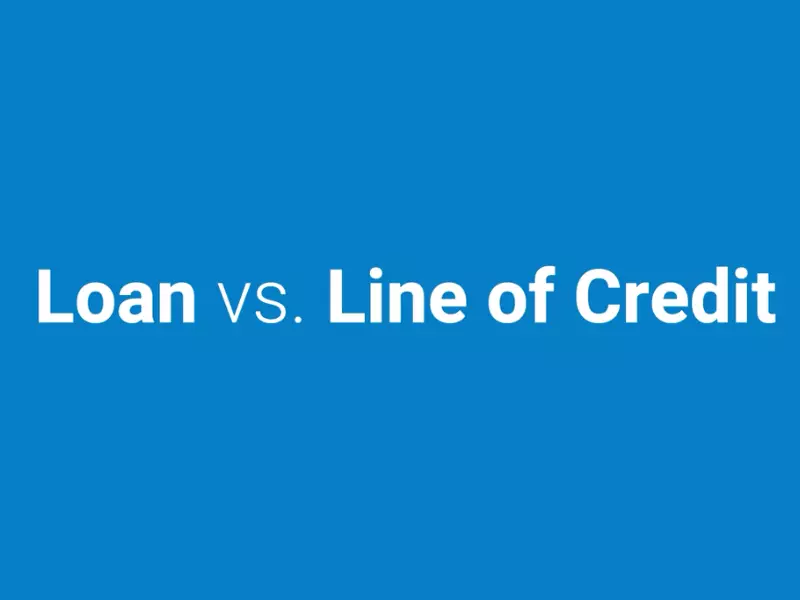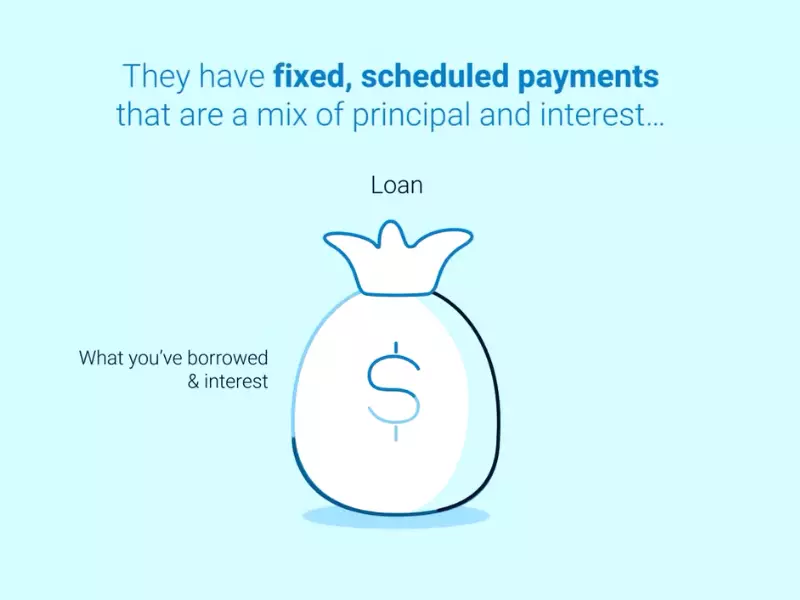Financial products, particularly loans and lines of credit, serve as critical tools in both personal and business finance, facilitating everything from the management of cash flow to the financing of large purchases. Each product comes with its own set of features, benefits, and ideal use cases, making the choice between them a significant decision for potential borrowers.
A loan is a fixed amount of money borrowed that is expected to be paid back with interest in a predefined schedule, whereas a line of credit is a flexible borrowing limit that can be drawn upon as needed, with interest paid only on the amount used. Understanding the fundamental differences between these two can help borrowers make informed decisions that align with their financial goals.
The choice between a loan and a line of credit hinges on the borrower’s specific needs, including the amount of money needed, the desired flexibility in accessing funds, and how they plan to use the money. Loans are typically best for one-time, large investments, while lines of credit offer flexibility for ongoing expenses.

Financial Basics
Loan Essentials
A loan is a financial agreement between a borrower and a lender, where the borrower receives a specific amount of money upfront and commits to paying back the total amount, plus interest, over a predetermined period. Loans are fundamental to the finance world, offering individuals and businesses alike the leverage to meet various financial goals.
Types of Loans
Loans come in many forms, each designed to serve different needs. The most common types include:
- Personal Loans: Unsecured loans used for personal expenses.
- Mortgages: Secured loans specifically for purchasing real estate.
- Auto Loans: Secured loans for buying vehicles.
- Student Loans: Designed to cover education-related expenses.
- Business Loans: For business expansion, equipment purchase, or operational costs.
Common Features
Despite their differences, most loans share several key features:
- Principal: The amount borrowed.
- Interest Rate: The cost of borrowing, expressed as a percentage.
- Repayment Term: The time frame for paying back the loan.
- Monthly Payments: Regular payments made towards the loan, covering both principal and interest.
Line of Credit Basics
A line of credit (LOC) is a flexible loan that gives borrowers access to a predetermined amount of funds, which they can draw from as needed. Unlike a traditional loan, you only pay interest on the amount you actually use.
How It Differs From Loans
Lines of credit offer a level of flexibility that traditional loans don’t:
- No Fixed Disbursement: Funds can be drawn at any time up to the limit.
- Revolving Credit: As funds are repaid, they become available again.
- Interest: Only accrued on the amount of money utilized, not the total available.
Key Differences
Access to Funds
The process of accessing funds varies significantly between loans and lines of credit:
- Loans: Provide a lump sum of money upfront, which is ideal for immediate, large expenses.
- Lines of Credit: Allow you to draw funds incrementally, making them suitable for ongoing or uncertain costs.
Interest Rates
Interest rates for loans and lines of credit are calculated differently:
- Loans: Typically have fixed interest rates, ensuring predictable monthly payments.
- Lines of Credit: Often feature variable rates, which can lead to fluctuating payment amounts.
Repayment Terms
Loans and lines of credit also differ in their repayment structures:
- Loans: Have a set repayment schedule, usually monthly, until the loan is paid off.
- Lines of Credit: Offer flexible repayment terms, with the option to pay only the interest during the draw period.
Use Cases
Each financing option caters to different financial needs:
- Loans: Best for single, substantial investments like buying a house or car.
- Lines of Credit: Ideal for managing fluctuating cash flow needs or unexpected expenses.

Advantages and Disadvantages
Loan Pros and Cons
Loans are a fundamental financial tool for both individuals and businesses. They provide essential funding but come with obligations. Here’s a balanced look:
Advantages of Loans
- Fixed Terms: Loans offer predictability with fixed interest rates and repayment schedules, making budgeting easier.
- Lump Sum: Borrowers receive funds upfront, ideal for significant one-time investments.
- Interest Rates: Typically, loans have lower interest rates compared to credit cards, making them a cost-effective option for borrowing.
Disadvantages of Loans
- Rigid Payments: Monthly payments are fixed, which can be a challenge during financial downturns.
- Qualification Criteria: Securing a loan requires a good credit score and sometimes collateral, which not everyone has.
- Early Repayment Penalties: Some loans penalize you for paying off your loan early, limiting flexibility in managing your debt.
Line of Credit Pros and Cons
Lines of credit offer a different set of benefits and challenges, catering to users who value flexibility over fixed terms.
Advantages of Lines of Credit
- Flexibility: Borrow what you need, when you need it, up to your limit.
- Pay Interest Only on What You Use: This can significantly lower your borrowing costs if you don’t use the full line.
- Reusability: As you repay what you’ve borrowed, those funds become available again.
Disadvantages of Lines of Credit
- Variable Interest Rates: Payments can increase if interest rates rise, making budgeting more difficult.
- Overuse Risk: The ease of accessing funds can lead to overspending and increased debt.
- Fluctuating Payments: Minimum payments can vary, complicating budget management.
Choosing What’s Best for You
Selecting the right financial product requires a thorough assessment of your financial health, understanding your needs, and possibly consulting with a financial advisor for personalized advice.
Financial Health Assessment
Evaluating your financial situation is crucial before making any borrowing decisions. Consider the following steps:
- Review Your Credit Score: Your creditworthiness affects your ability to qualify for loans or lines of credit and the interest rates you’ll receive.
- Analyze Your Income and Expenses: Understand your budget to determine how much you can afford to borrow and repay.
- Consider Your Debt-to-Income Ratio: Lenders use this ratio to assess your ability to manage monthly payments. Lower ratios indicate better financial health.
Short-term vs Long-term Needs
Your borrowing needs can vary greatly depending on whether you’re facing short-term expenses or planning for long-term investments.
- Short-term Needs: If you’re dealing with fluctuating expenses or need emergency funds, a line of credit may offer the flexibility you need.
- Long-term Needs: For significant, one-time purchases or investments, such as buying a home or funding college education, a loan provides the structure and predictability that might better suit your needs.
Consultation with Financial Advisors
Seeking advice from financial advisors can provide you with tailored strategies that align with your financial goals. They can help you:
- Understand Different Financial Products: Advisors can explain the nuances of various loans and lines of credit.
- Assess Your Financial Position: They can offer insights into your financial health and borrowing capacity.
- Plan for the Future: Advisors can help you align your borrowing decisions with your long-term financial goals.
Frequently Asked Questions
What Is a Line of Credit?
A line of credit is a flexible loan from a bank or financial institution. Similar to a credit card, it allows you to borrow up to a certain limit and pay interest only on the portion of money that you borrow. You can draw and repay funds as you wish, as long as you do not exceed your credit limit.
How Does a Loan Differ From a Line of Credit?
The main difference lies in the disbursement of funds and repayment terms. A loan provides you with a lump sum of money that needs to be repaid over a fixed period with interest. In contrast, a line of credit offers a credit limit that you can draw from as needed, paying interest only on the amount used.
When Should I Choose a Loan Over a Line of Credit?
Choose a loan for large, one-time expenses, such as buying a house or car, where you know the exact amount you need, and you can repay it over a fixed term. Opt for a line of credit for ongoing or uncertain costs, such as home renovations or to cover cash flow shortages, for its flexibility in borrowing and repayment.
Can I Have Both a Loan and a Line of Credit?
Yes, it’s possible to have both a loan and a line of credit simultaneously, provided you meet the lenders’ qualification criteria for each. This approach can offer financial flexibility, allowing you to manage both predictable and unpredictable expenses efficiently.
Conclusion
Choosing between a loan and a line of credit is a pivotal financial decision that hinges on understanding your financial situation, needs, and the specific terms offered by lenders. By comprehending the nuances of each option, borrowers can select the financial product that best suits their immediate and long-term financial strategies.
In the end, the right choice depends on the borrower’s specific financial scenario, including their repayment ability, financial stability, and future goals. It’s essential to consider these factors carefully and, if necessary, consult with a financial advisor to make the most informed decision that aligns with your financial objectives.
